When is Mahashivratri celebrated?
Mahashivratri is celebrated on Magha Krushna Paksha Chaturdashi (Fourteenth day of the dark fortnight in the eleventh month of Magha as per Hindu lunar calendar). This year it falls on 8th March 2024. On this day, Deity Shiva rests for one part of the night (prahar). His resting period is called as Mahashivratri. Mahashivratri is celebrated in South India and Maharashtra according to Shak Samwat calendar on Magh Krushna Chaturdashi and in North India according to Vikram Samwat calendar on Falgun Krushna Chaturdashi.
The time span of Deities in higher subtle planes and ours on earth is different. Hence, Deity Shiva’s resting period of one prahar (part) at night occurs after one year time span on earth. The reason behind this is that earth is gross, so it takes more time to travel in space (its speed less). Deities are omnipresent / omniscient. They are subtle in form, so their speed is fast. They travel in less time in the universe. That’s why there is a difference between the time span of Deities and earth. One year on earth is equivalent to a day in Swargloka (heaven).

Importance of Mahashivratri
On the day of Mahashivratri, Shiva-tattva (Deity Shiva’s Principle) is a thousand times more active in the atmosphere as compared to the other days. To avail maximum spiritual benefit of the Shiva-tattva on this day, chant ।। Om Namah Shivay ।। and worship Deity Shiva with bhav (spiritual emotion). By obtaining more Shiva-tattva, we are protected from negative energies.
The duration when Deity Shiva rests during mahashivratri is called as Pradosh or Nishithkal. During this time Deity Shiva goes from the state of Dhyan (meditation) to state of Samadhi. On earth this time is of about one hour to one and a half hour. During this time period, if one worships Shiva in any way, even out of ignorance, or any mistake is committed while worshipping, yet the person receives a hundred percent benefit of it.

Historical story of Mahashivratri
There was a cruel hunter, who was also a great sinner. Once when he went for hunting, he came across a Shiva temple. Since it was the day of Mahashivratri, he saw many people performing worship devoutly, singing bhajans (devotional songs), kirtans (devotional discourses) etc. He made fun of them, saying that they were fools who consider a stone to be a God and chant ‘Shiva, Shiva’ and ‘Har Har’, and he proceeded to the jungle. He climbed on a tree to look out for a prey; but the tree leaves blocked his vision. So, he began plucking the leaves. At that time, unknowingly he was chanting ‘Shiva, Shiva’. The leaves he plucked fell on a Shivapindi (Deity Shiva’s sacred symbol) that was beneath the tree. At day break, he saw a deer. He was about to release a bow when the deer begged for its life. The deer also told the hunter what happens when a sin is committed, and went away. The tree was a bel (Aegle marmelos) tree, the leaves of which are Deity Shiva’s favourite. Unknowingly, the hunter had remained awake throughout the night of Mahashivratri, had offered bel leaves to Shiva and chanted Shiva’s name. All this destroyed his demerits and he obtained divine knowledge. This story indicates how Deity Shiva is pleased even if one worships Him unknowingly.
How to perform Mahashivratri vrat?
Fasting, worship and remaining awake the whole night are the three aspects of this vrat.
One should have only one meal (remain ekabhukt) on Magha Krushna Paksha Trayodashi (Thirteenth day in the dark fortnight of eleventh month as per the Hindu lunar calendar). On the next day, that is, Chaturdashi morning, the sankalp (resolve or intent) for the vrat should be made. In the evening, bathe in a river or a lake according to religious customs. Wear a rudraksha mala and apply bhasma (holy ash). At the time of Pradosh, go to a Shiva temple, meditate, perform Shodashopchar-puja (ritualistic worship involving sixteen specific substances) and offer water to Shiva-Parvati. Deity Shiva should be offered 108 lotuses or bel leaves, accompanied by chanting His name. Then Arghya (an oblation of water to God) should be given after offering flowers. After the worship, recitation of verses and chanting of moolmantras (the primal mantra) is completed, the flower offered to Deity Shiva is taken and touched to our forehead. Also one should ask pardon for the sins committed.
‘On the day of Mahashivratri, Deity Shiva is also offered mango blossoms.’ – Gurudev Dr. Kateswamiji
On the eighth day of the dark fortnight of the Hindu lunar month of Jyeshtha, Deity Shiva and on the fourteenth day, Revati should be ritualistically worshipped with blue flowers. The tuft of Kevada plant should be offered to Deity Shiva during the udyapan (ritual of concluding) of the Mahashivratri vrat.
Yam puja
It is said that Deity Shiva should be worshipped four times in the four parts of the night of Mahashivratri. This is called Yam puja. In every Yam puja, God should be given a sabhyang snan (ritualistic bath). Anulepan (applying scented paste) should be performed, also leaves of dhatura (Mexican poppy), mango and bel should be offered. Arti should be performed with 26 lit lamps, made from rice flour. At the end of the worship,108 lamps should be donated. Each worship has different mantras. Arghya should be given while reciting these mantras. Dancing, singing and listening to stories etc. should be done to remain awake throughout the night. At dawn, Deity Shiva should be worshipped again, after a bath. A meal should be offered to a Brahmin to mark the end of the fast. After taking his blessings, the vrat should be concluded. Concluding ceremony should be performed after doing this vrat for twelve, fourteen or twenty four years.
Do this on Mahashivratri!
Chant the Om Namah Shivay mantra of Deity Shiva
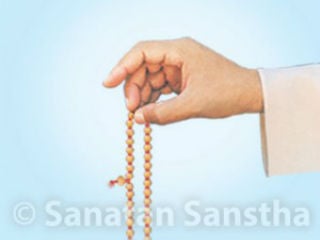
In Kaliyuga, chanting is the recommended and easiest spiritual practice. On Mahashivratri, since the principle of Deity Shiva is a thousand times more active in the atmosphere than on other days, chant the name of Deity Shiva ‘Om Namah Shivay‘ as much as possible.
Listen to the Om Namah Shivay mantra!
If one performs spiritual practice on Mahashivratri, then one is bound to obtain maximum benefit from the increased principle of Deity Shiva. One may also have spiritual experiences. To know how to perform spiritual practice, how to celebrate festivals in the correct way, how to worship your favourite Deity, join Sanatan Sanstha’s online orientation ‘Sadhana Samvad‘!
Perform abhishek on Shivapindi
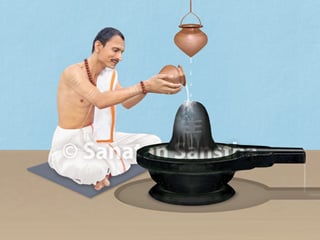
If possible perform abhishek on (consecrate) the shivapindi with milk. This is because milk has a greater ability to attract the Shiva Principle, resulting in the Shiva Principle getting awakened promptly. This milk is then partaken as tirtha (holy water) benefitting the individual spiritually, with the Shiva Principle to a greater extent.
Apply Bhasma to Shivapindi instead of haldi-kumkum

While performing puja of any Deity, after bathing the idol, haldi and Kumkum is offered. But it is forbidden to offer haldi-kumkum on a Shivapindi. Haldi (turmeric) grows beneath the ground level. It is considered a symbol of creation. Kumkum is also a made from haldi, hence it also represents creation. As Shiva is the Deity of dissolution (Laya), haldi which is a symbol of creation, cannot be used in His worship. Bhasma (holy ash) being a symbol of dissolution is applied on a Shivapindi. On the visible side of the Shivapindi, three equivalent horizontal parallel lines are made using bhasma. In middle of the three lines, a circular shape is drawn which is called as Shivaksha.
Offer white akshata (unbroken rice grains) to Deity Shiva

White akshata represent extreme detachment, that is a symbol of selfless spiritual practice. Generally white akshata are used to attract waves of the superior Deities, maximally related to the nirgun (non-materialized). These waves from the Universe are subtler, than those attracted by red akshata. Since the Principle of Deity Shiva is associated with the waves of karma (action) and dnyan (knowledge) respectively, white akshata related to the nirgun, are used while worshipping Him.
Offer white flowers to Deity Shiva!

Deity Shiva should be offered flowers of Dhatura, white lotus, Shweta Kanher (White Oleander), Chameli (Plumeria alba), Mandar (Coral), Nagachampa (Mesua ferrea L.), Punnaga (Calopbyllum inophyllum), Nagakeshar (Mesua ferrea), Nishigandha (Tube-rose), Jai (Jasmine), Jui (Eared jasmine), Mogra (Daisy) or other white flowers. (Kevada [Screwpine flower] is prohibited for Shiva; hence, it should not be offered, except on the day of Mahashivratri.)
Offer bel patra to Deity Shiva
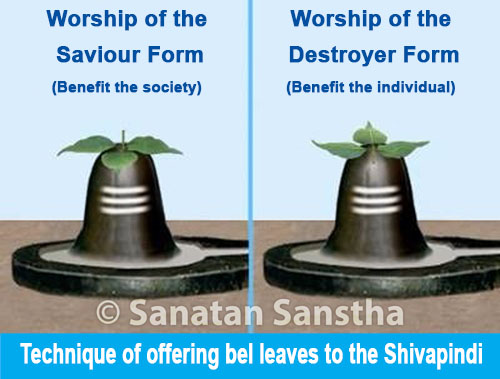
On Mahashivratri, bel patra (leaves of bel tree), white flowers etc. are offered on the Shivapindi which attract maximum Shiva principle. Through these items more Shiva-tattva is attracted from the environment. Chanting the name of Deity Shiva or by offering bel patra alongwith chanting His various names is called as Bilvarchan. In this ritual, the Shivapindi is thus completely covered with bel patra.
How to offer bel patra (leaf) to Deity Shiva?
Generally a devotee worships the saviour form of His Ishtadevata or favourite Deity, since it matches his constitution and is conducive for spiritual progress. To obtain Deity Shiva’s Saviour principle, worshippers should direct the stalk of the bel patra towards the Shivapindi and its tip towards oneself. In this position, the proportion of Shiva principle being emitted through the bel leaf into the environment is higher. This way of offering benefits the society (samashti).
On the other hand, if the stalk of the bel leaf is directed towards yourself and its tip faces the Shivapindi, then the Shiva principle being emitted from the stalk is obtained only to the individual offering it. The Shakta sect or devotees worshipping the Destroyer form of Deity Shiva offer bel patra in this way.
The bel patra should always be offered in the upside down position.
Picture of Bel patra showing its subtle characteristics
Incense-stick of which fragrance should be offered to Deity Shiva on Mahashivratri?
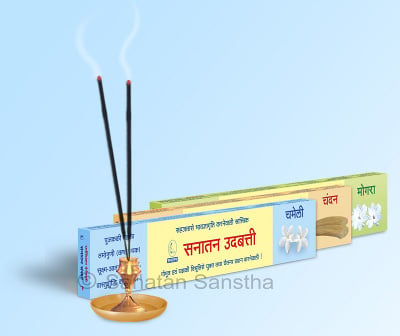
While worshipping the tarak (saviour) form of Deity Shiva, devotees should use incense-sticks and fragrance of Jasmine & heena. But on Mahashivratri, it is recommended to use the fragrance & incense-stick of Kewada.
Visit a Shiva temple!
How to take darshan of Shivapindi ?
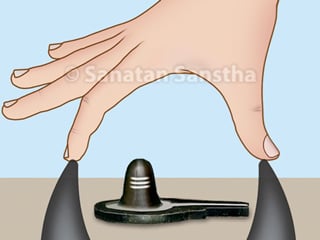
Hindu Dharma prescribes that one must have darshan of Nandi by touching both its horns, before having darshan of the Shivapindi in a Shiva temple. This is known as Shrungadarshan. One should sit or stand to the right side of Nandi and place left hand on Nandi’s testicles. Then place the forefinger and thumb on the two horns of Nandi. Now, view the Shivapindi through the frame thus created by the finger, thumb and the horns. This is the correct way of taking darshan of a Shivapindi or Shrungadarshan. Let us understand the benefits of Shrungadarshan obtained in subtle demonstrated through a picture :
How to perform pradakshina around a Shivapindi ?

The path of pradakshina (circumambulation) around Deity Shiva or Shivapindi is like a crescent moon, i.e. Somasutri. The sutra, i.e. channel, which runs from Shalunka towards north, i.e. towards Soma, upto the temple premises is called Somasutra. While we stand in front of the Shivapindi, the panhali (extension of Shalunka) that is channel for the water of Abhishek to pass, is to our right. Stand in front of the Shivapindi. The path of pradakshina starts from here. Go to the other side of the channel in the clockwise direction. Then come back to the starting point. Do not cross the channel when you reach the other. This completes one pradakshina. This rule applies only if the Shivalinga is man-installed or man-made; and not to Swayambhu Lingas as well as Chal Lingas (that is Shivaling at home).
Know more about Deity Shiva!
Buy Sanatan’s books to know in detail about Deity Shiva!
Sanatanshop.com
List of places where Sanatan’s books & products stalls will be put up on Mahashivratri : https://events.sanatan.org/
Watch Mahashivratri videos (Hindi)
How to celebrate Mahashivaratri during adverse times?
1. Alternate ways for worshipping Deity Shiva
A. Due to the restrictions imposed to curb the spread of Corona pandemic, those who cannot visit the Shiva temple on Mahashivaratri should worship Shivaling at their home.
B. If Shivaling is not available, one should worship the picture of Deity Shiva.
C. If picture of Deity Shiva is also not available, then one should draw a picture of Shivaling or Deity Shiva on a platform for the worship.
D. If none of the above is feasible, then one can write Deity Shiva’s chant ‘ॐ नमः शिवाय ।‘ and worship it. These points are also applicable to those who fast on Mondays in the Hindu lunar month of Shravan and perform ritualistic worship of Deity Shiva.
E. Mental worship : An important principle in spirituality is that subtle is superior to gross. Also, subtle is more powerful than the gross. According to this principle, if physical worship of Deity Shiva is not possible, one can also worship Him mentally.
To survive the calamitous times, you need spiritual power. Therefore, even though there are limitations in performing the vrats as usual, one should not feel discouraged and should pay more and more attention to ones’ spiritual practice. On the occasion of Mahashivaratri, let us surrender ourselves to the holy feet of Deity Shiva and pray with submission, ‘O Shiva Shambho, give us strength, intellect and inspiration to do sadhana. Let the difficulties and obstacles that come in the way of our sadhana get eliminated.’






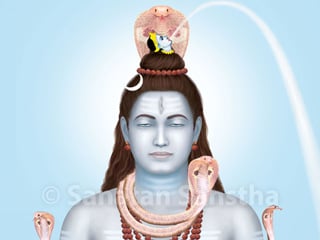
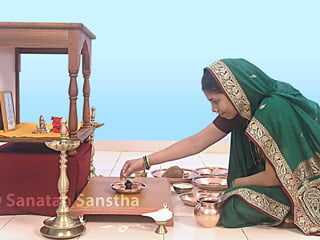


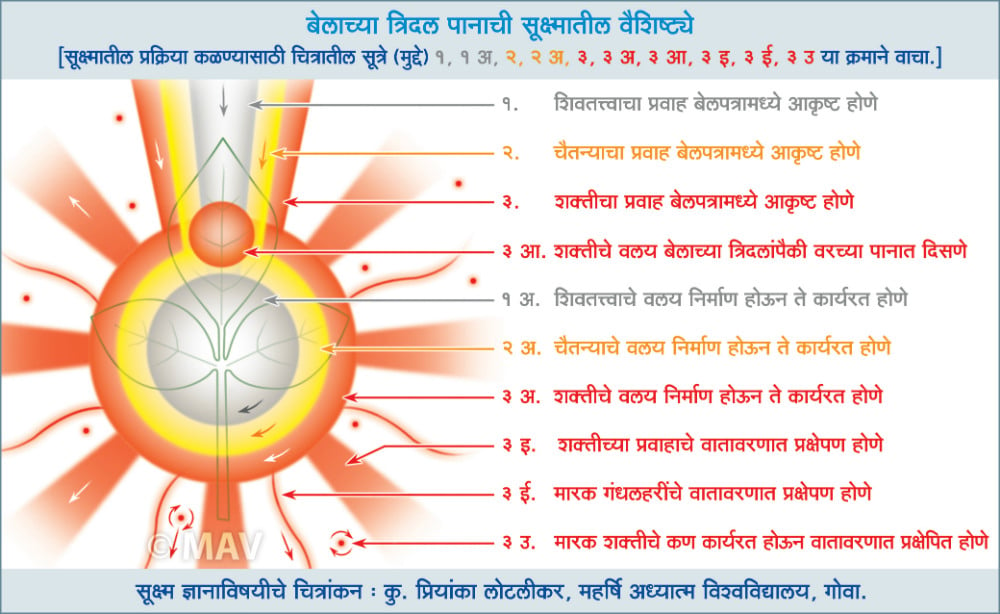

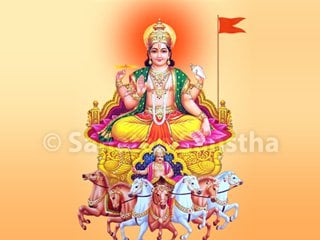 Ratha Saptami 2024
Ratha Saptami 2024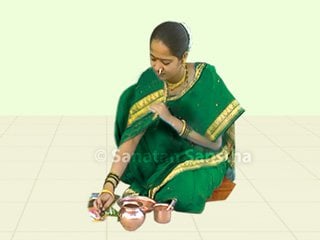 Importance of Adhik maas (Purushottam maas)
Importance of Adhik maas (Purushottam maas)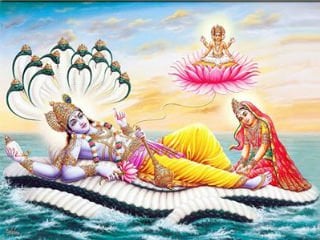 Vaikunth chaturdashi is an invaluable opportunity granted to us to worship Deity Shri Vishnu
Vaikunth chaturdashi is an invaluable opportunity granted to us to worship Deity Shri Vishnu How to celebrate Navaratri in adverse times caused by coronavirus pandemic ?
How to celebrate Navaratri in adverse times caused by coronavirus pandemic ?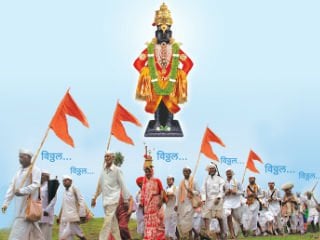 Experiencing spiritual emotion and devotion from the palanquin procession
Experiencing spiritual emotion and devotion from the palanquin procession
om namah shivay mahashivratri festival is very nice. daily recall om namah shivay